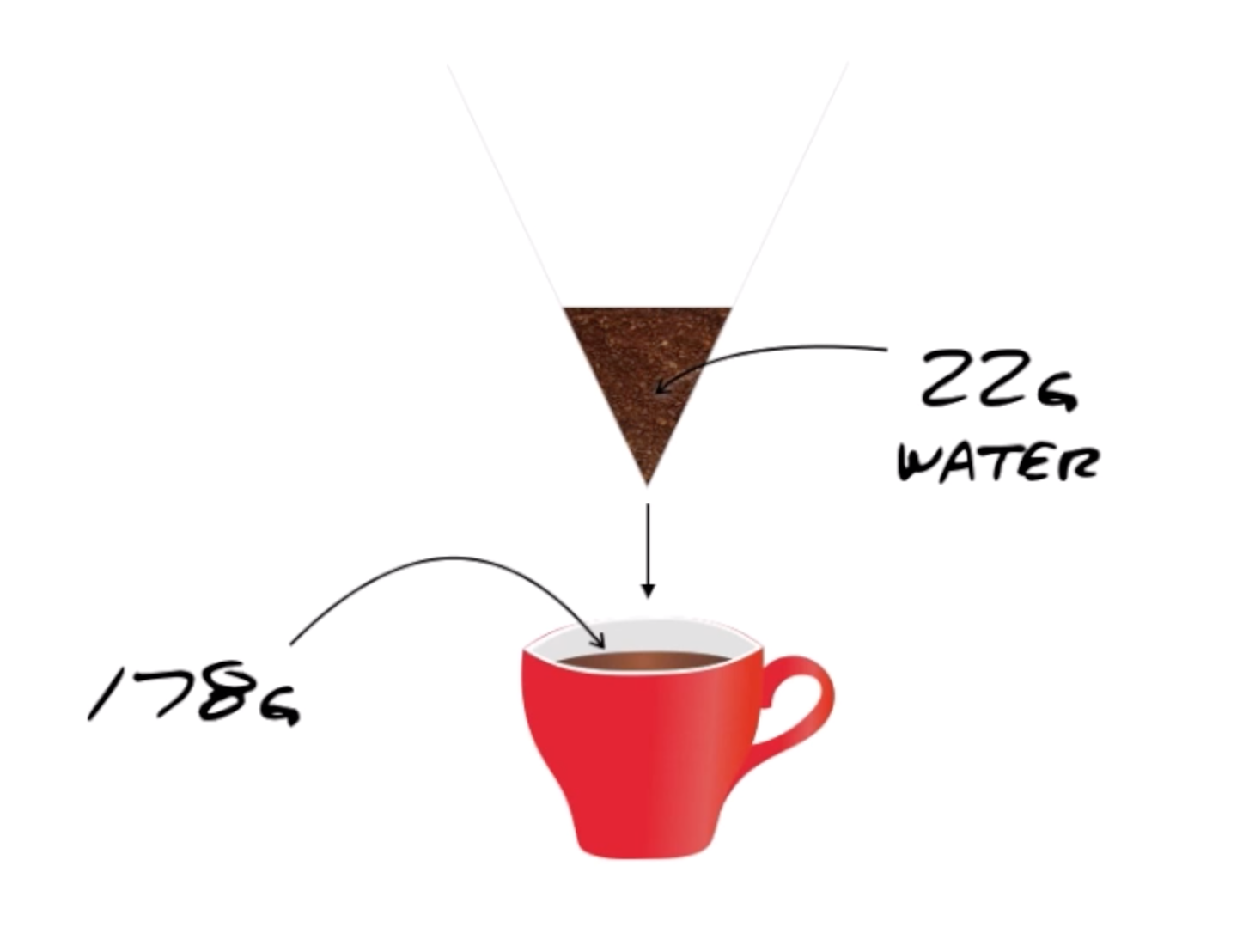Chapter 1 Coffee
Explaining the Brewing Methods Poster
9 videos explaining the concepts in the Brewing Methods Poster.
Chapter 2 Water
Water is a bent polar molecule with two partially positive hydrogen atoms and one partially negative oxygen. Three properties make water a great solvent: (1) polarity, (2) thermal conductivity and (3) the ability to form cages. Water molecules dissolve coffee compounds by competing with weak intermolecular bonds between coffee compounds and separating the compounds from their neighbours.
Buffering is a form of homeostasis. Homeostasis means keeping things the same, and nature loves it. Any feedback system that keeps things relatively constant is a homeostatic system.
How the surface area of our grinds and extraction are related.
pH is a measure of the concentration of the hydrogen ion (H⁺), and hydronium (H₃O⁺), in a solution. Water without ions (deionised water) has a pH of 7. However, the acidity will quickly increase (i.e. the pH will decrease) when deionised water is exposed to atmospheric carbon dioxide.
Hardness comes in two varieties that are of concern to us: general hardness (GH) and carbonate hardness (KH). GH comes from dissolved calcium (Ca²⁺) and magnesium (Mg²⁺). It's likely that the GH in your water supply comes mostly from calcium. Calcium and magnesium ions attract water molecules around them, making the water an even better solvent.
Water softening using Weak Acid Cation (WAC) and when it shouldn't be used.
Chapter 3 Grinding
Coffee grinders crush and cut coffee beans. Because coffee beans are brittle we end up with a range of particle sizes.
A short video explaining why when we use a finer setting on the grinder, the ratio of fines to modal grinds increases.
Different flavours extract at different rates. The rate at which these compounds extract is sped up markedly when we grind the beans finer.
How the grind size affects the flowrate.
The terms used to describe various parts and technologies of grinders.
A description of how grinding affects the flavours in the cup with a discussion on fines and whether eliminating them is a good thing or whether we should embrace them. When we grind coffee we unavoidably create different sizes of particle i.e. grinders don't create one size of grind (particle), rather many.
Chapter 4 Flavour perception
A quick video cupping for defects with some extraordinary slurping going on.
A quick diagrammatic video of the cupping format.
Chapter 5 Espresso
Getting the fundamentals right. A simple explanation of basic espresso base formation.
Before tamping your coffee puck, you'll sometimes need to distribute the grinds. Here are two methods for doing so: 'NESW' and 'finger strike'.
A close-up look at the coffee puck during pre-infusion and infusion. Portafilter by Tije. Video by Frans Goddijn (edited and adapted).
Most grinders have a certain amount of grind retention. After we change the grind size, we need to purge the grinder.
An increased dose in espresso leads to a more sour brew and a longer pre-infusion decreases the sourness of a brew. Here's why.
When we change the grind size, we change the extracted taste balance for a given yield. Here is a graphical explanation of what's happening.
Espresso machines need to heat water to brewing temperature for coffee, say around 94ºC, and water at around 125ºC for creating steam to heat milk. Heat-exchange machines are the most common solution for creating two temperatures of water. Many of these machines initially produce hotter brew water. These machines need a cooling flush.
The E61 is a marvel of engineering. It has 4 kg of brass in the head providing thermal inertia that heats up brew water that is too cold and cools brew water that is too hot. This is heated by a thermosyphon circuit, which is broken by a solenoid to allow brewing of coffee and pressure release after the coffee has been brewed.
Traditional espresso is brewed at 9 bar, which is easy if you're brewing at 90 m below the surface of the water. How do we manage it on dry land? Lever, pump, variable pump.
Espresso machines need to provide water for brewing coffee, at say 94ºC, and steam for heating milk, at say 125ºC, 257ºF.
There are a few solutions to the problem of brewing two temperatures with the same machine. Here are the three common ones: heat-exchange (HX), dual-boiler, multiboiler.
Getting the best shot from espresso is complicated. I've divided the process into primary and secondary steps to get the best out of the shot. This video covers the primary steps and aims to get a sweet espresso. Start with the dose that will remain consistent.
Understanding flowrate and velocity.
Understand what flowrate is and the six ways to change the flowrate through the coffee puck.
Chapter 6 Milk
As you pour the milk into the cup, the jug will turn from the vertical and accelerate towards the horizontal. Initially, the pour will be thin﹣keep it like this until the cup is half full. Thereafter increase the rate of pour and maintain that rate.











